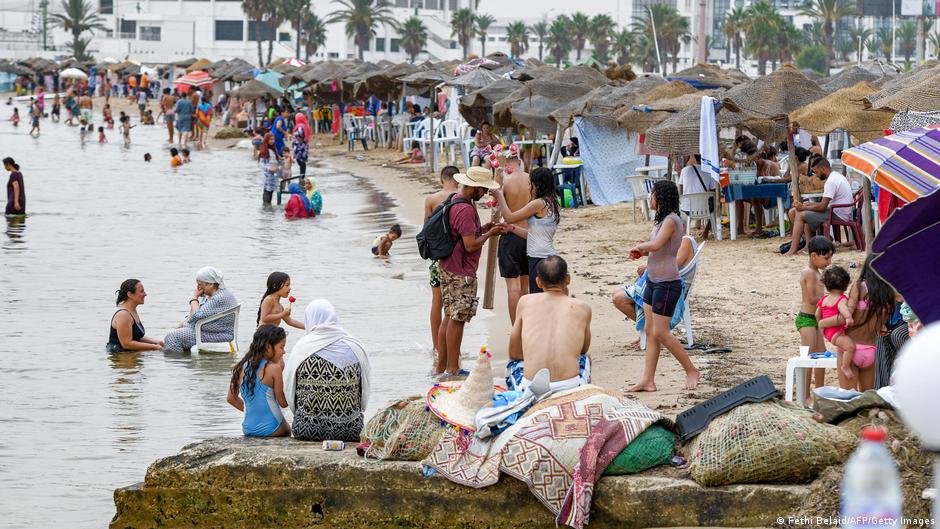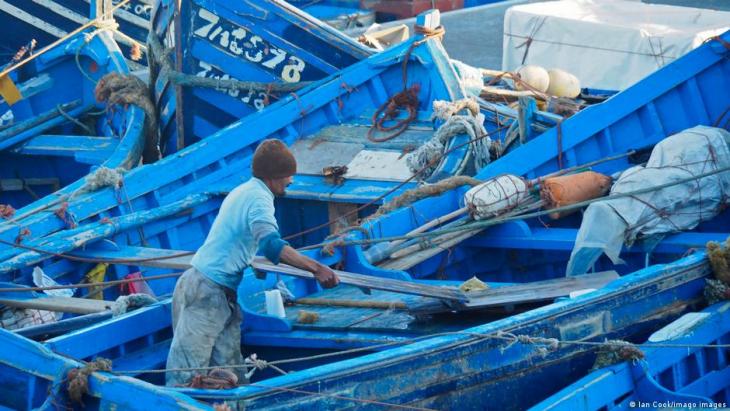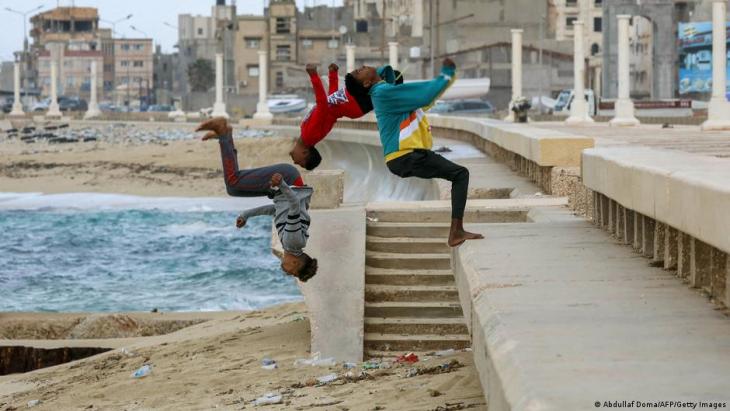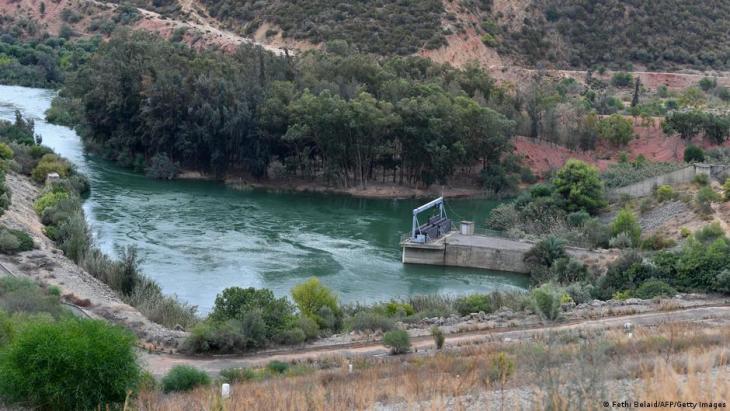Will North Africa's beaches disappear?

Over the past 15 years, the fishermen of Ghannouch, a town around 400 kilometres south of the Tunisian capital, Tunis, say they have seen "radical changes" along the coastline they sail around.
"The sand is decreasing and the rocks are starting to appear," says Sassi Alaya, a local seaman and the head of the fisheries guild in the southern port. "It is a double problem because the coasts of the state of Gabes are already suffering from environmental pollution due to the chemical factories in the region. It greatly affects the work of small fisheries' businesses."
"There are black spots around the coasts now," added Mounir Kcherem, a fisherman from nearby Kerkennah island. "There are huge differences between the coast today and the coast 20 years ago," he said. "Although this phenomenon is still confined to specific places around the island."
The fishing families in southern Tunisia are not the only ones dealing with such changes. A recent study by the World Bank that looked at the economic consequences of coastal erosion in this area found that countries such as Tunisia, Morocco, Libya and Algeria were losing their beaches faster than almost anywhere else in the world.
Faster than global average
The study concluded that beaches in the Maghreb region eroded at a rate of 15 centimetres per year on average between 1984 and 2016. The global average is about 7 centimetres a year.

It can be hard to work out how much coastline has been lost in a single country, because coasts both gain and lose sand, so national averages can be misleading. But it was when World Bank researchers used more detailed data and satellite imagery from the European Space Agency and the National Oceanography Centre in the UK, that it became clear just how endangered the Maghreb coastline was in certain areas.
Just over a third – 38% – of Morocco's beaches are eroding and the country loses between 12 to 14 centimetres a year. Libyan coasts are receding by around 28 centimetres every year. But these are considered comparatively stable compared to Tunisia. There, about a third – 35% – of sandy beaches are also eroding, but at the much faster rate of between 50 and 70 centimetres per year.
For example, between 2006 and 2019 in Hammamet, a popular tourist town just south of the country's capital Tunis, the beach area halved. That equals a loss of about 24,000 square metres or between 3 and 8 metres every year, experts calculated.
World Bank economists also tried to calculate the value of such losses by working out what lost land and infrastructure on the coast was worth. They found these would be equivalent to about 2.8% of gross domestic product (GDP) in Tunisia, 0.7% in Libya, 0.4% in Morocco and 0.2% in Algeria. Altogether, this would have been equivalent to around €2.42 billion, on the basis of those countries' national income from 2021.
However, as the researchers also noted, "these costs are on the lower side as they do not incorporate other values such as foregone revenues from tourism".
Coastal erosion also has another knock-on effect: as saltwater encroaches on land, it starts to pollute fresh groundwater, making it saltier. The brackish water can't be used for drinking or agriculture.
Socioeconomic disaster
The potential impact of coastal erosion on sectors like tourism and fishing are like a "socioeconomic bomb" waiting to go off, said the writers of an article published by HydroSciences Montpellier, a special laboratory at the University of Montpellier in France that focuses on Mediterranean water resources.

"Climate change amplifies other threats and exacerbates underlying vulnerabilities and social risks," explained Lia Sieghart, the World Bank's practice manager for environment and natural resources for the Middle East and North Africa. "Marginalised social groups are particularly vulnerable to the impact of climate change. That's why political stabilisation and actions on climate change go hand in hand."
The situation in Maghreb countries is also more precarious because of the number of locals living on or near the coast. An estimated 40% of the world's total population lives near the sea.
In Morocco, however, the percentage of locals living close to the coast is 65% and in Tunisia, it's around 85%. Many of the Maghreb's major cities are located on the coast and in Tunisia, for example, an estimated 90% of the country's economic output happens by the seaside.
In fact, the increasing urbanisation and population pressure at coastlines may well be one of the many reasons for more rapid coastal erosion. Buildings and humans crowd out the natural elements that tend to protect against erosion, such as wetlands, plants and sand dunes.
Another major reason for the disappearing beaches is obviously rising sea levels. But, as experts were keen to point out, the real reason Maghreb countries are experiencing some of the worst coastal erosion in the world may actually lie much further inland.
"If there is a difference between the Maghreb and northern Mediterranean countries, then I think it's about the number of dams and the number of rivers," explained Gil Mahe, research director at the Hydrosciences Laboratory in Montpellier, France, who is currently working at the Institut National des Sciences et Technologies de la Mer, or INSTM, in Tunisia. Erosion is happening faster here because "there are not a lot of rivers and a lot of dams," Mahe said.
Studies in Tunisia, Algeria and Morocco that investigate the history of sedimentation near where rivers reach the sea, have shown that where there are large dams, not enough sand is arriving on the coast, Mahe explained. The natural geomorphological functioning of a coastline would see sand arrive to bulk up the coastline, then it would be washed out to sea by marine currents.
Pressure on land and at sea
But the Maghreb coastline is under pressure from two elements of climate change. Warmer temperatures are causing sea levels to rise, which encroaches on beaches. It also makes extreme weather events, that can damage the coastline with, for example, floods, huge waves and wind, more frequent.

At the same time, a heating planet also has less rain, which means that local authorities in North Africa are trying to store fresh water wherever they can, in order to provide it to that ever-growing coastal population. This requires more dams.
It sounds like a vicious circle. But Mahe, who is working on various plans to better manage Tunisia's coastline and make it clear to local authorities exactly what is at stake, does have some hope. While a rise in sea levels is now inevitable, he said, there are numerous ways to minmise harmful human impacts and better protect coastlines and to cope with what's coming, until humans and nature "reach a new equilibrium," he argued.
Experts such as Mahe and those at the World Bank recommend what they call "integrated coastal management plans." These can include everything from a higher tax on coastal construction work and real estate, to the renovation of inland dams that allow more sand and sediment to flow towards the coast, to the erection of wind fences on dunes, or replanting plants.
The World Bank is assisting with some of these plans in the Maghreb, the organisation's Sieghart pointed out. "It's true that no country can single-handedly address climate change," she said. But, she added, local reactions are still crucial because "these can help adapt and mitigate climate change impacts."
Cathrin Schaer & Tarak Guizani
© Deutsche Welle 2022